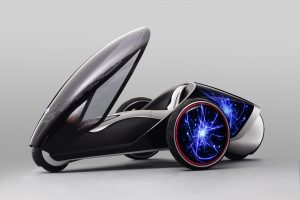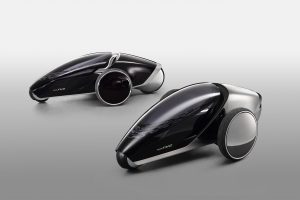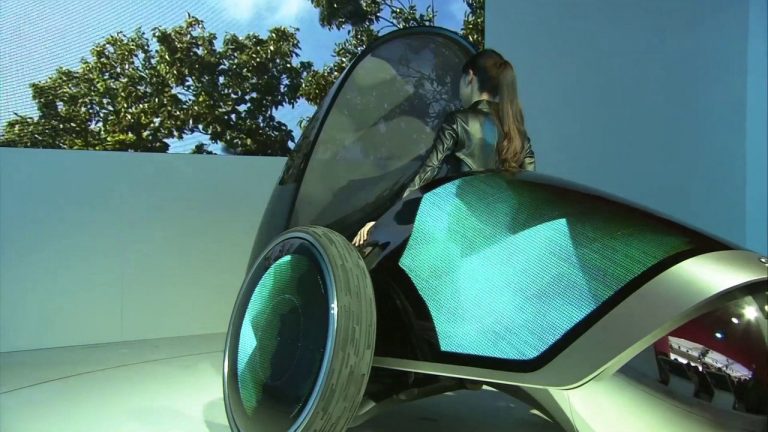Toyota FV2: A Glimpse Of The Future
- Full image library here
The FV2 makes its European debut at the 2014 Geneva motor show, and is a concept designed to capture the spirit of Toyota’s fun-to-drive philosophy, while connecting advanced future vehicle technologies.
Physical connection: the FV2 doesn’t have a steering wheel; instead, it is operated by the driver shifting his or her body intuitively to move the vehicle forwards or back, left or right. It also uses intelligent transport system technology to connect with other vehicles nearby and highway infrastructure to capture safety information, for example giving advance warning of vehicles in blind spots or at junctions.
Emotional connection: Toyota believes the relationships between drivers and their vehicles will continue to develop aspects of trust and understanding, similar to those a rider will have with a horse. It has taken technology from the Toyota Heart Project to allow the driver and FV2 to develop a relationship. The vehicle uses voice and image recognition to determine the driver’s mood; it can use accumulated driving history to suggest destinations; and can present driving skills information to assist the driver. An augmented reality (AR) display can be presented on the windscreen and the body colour and exterior display can be changed at will.
The Toyota Heart Project
The Toyota Heart Project is a new communication research project developed under the theme ‘Inspiring the Heart, Inspiring You’.
Basing its research on a unique, ‘open innovation’ method, the project envisages a future in which, in addition to simply talking and listening, humans and artificial intelligence will be able to engage in emotional communication which includes the use of expressions and gestures, and the recollection of past events.
Toyota’s Kirobo and Mirata humanoid communication robots, which incorporate technologies for communication and artificial intelligence, are part of this research project.
Good to know
• The FV2’s Augmented Reality windshield display supplements computer-generated data with sensory information received from the user’s environment.
• The Toyota Heart Project’s ‘open innovation’ method is a research and development technique that transcends organisational frameworks to gather diverse knowledge and technology.
| Dimensions | |
| Length (mm) |
3,000 |
| Width (mm) |
1,600 |
| Height (mm) |
990 (sleep mode) |
|
1,780 (driving mode) |
|
| Wheelbase (mm) |
2,360 |







